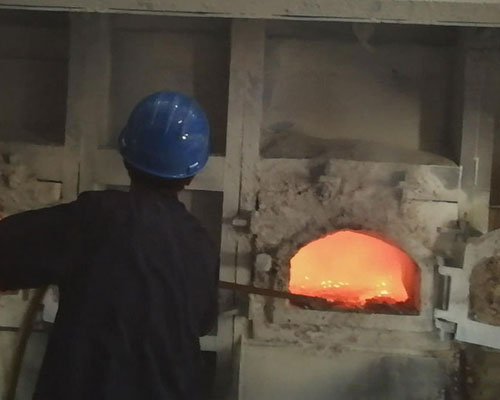The stirring flux method to filter the aluminum melt is beneficial to realize the thermodynamic tendency of the inclusions in the aluminum melt to migrate into the flux, so that the inclusions (Al2O3) easily enter the flux layer and chemically react with the active ingredients in the flux. In this way, the inclusions generate new compounds in the active flux, which can prevent the inclusions from returning to the aluminum melt in the stirring fluxes.
Using the stirring active flux method to purify the aluminum melt can prevent the molten salt thrown into the aluminum melt from being melted and generating new inclusions. Since the density of the aluminum melt is greater than the density of the flux, when stirring the active flux to filter the aluminum melt, The aluminum droplets will sink under the molten flux, so as to prevent the aluminum melt from reacting with oxygen and water vapor in the air to produce secondary inclusions. Stirring the flux to filter the aluminum melt can make the inclusions in the aluminum melt fully contact the flux. With this method, the impurity removal efficiency can reach more than 84%.
The method of filtering and purifying non-metallic inclusions in the aluminum melt is to make the flux fully contact the aluminum melt, and at the same time, the flux and the non-metallic inclusions (Al2O3) in the aluminum melt chemically react, so that the inclusions will not return to the aluminum melt again.
Stirring Flux Method
(1) Use the method of stirring the flux to filter the aluminum melt. The aluminum melt is dispersed into fine aluminum droplets by the flux, so that the non-metallic inclusions in the aluminum melt can be distributed on the surface of the aluminum droplets.
(2) The aluminum droplets redistribute the inclusions in the rotating flux, and the inclusions in the aluminum droplet have the opportunity to be distributed on the surface of the aluminum droplet to contact the flux. Purifying the aluminum melt with the stirring flux method can remove the fine inclusions in the aluminum melt to meet the needs of large-scale industrial production of high-quality aluminum.

When the industrial pure aluminum and molten salt are both melted, put the covering agent in the crucible containing the aluminum melt, then put the electric mixer into the molten flux crucible, and add the aluminum melt in batches during the process of stirring the flux to avoid Add a large amount to cause secondary oxidation. The rotating melting flux disperses the aluminum melt into fine aluminum droplets, so that the inclusions have a chance to reach the surface of the aluminum droplets and increase the chance of the aluminum melt and the flux contact. Use a stirring flux to purify the aluminum melt, and add the aluminum melt in batches during the stirring of the molten flux to disperse it into fine aluminum droplets. These aluminum droplets will be condensed in the rotating molten flux, then condensed and then dispersed again, so that the non-metallic inclusions in the aluminum melt can be distributed on the surface of the aluminum droplets. The aluminum droplet is in the rotating flux, and the surface of the aluminum droplet and the surface of the flux are constantly updated, so that the inclusions in the aluminum droplet can be newly distributed and the inclusions are distributed on the surface of the aluminum droplet. This can overcome the inability of inclusions to complete long-range mass transfer due to the influence of viscosity and surface tension. Each increase in the number of flux purifications can cause the aluminum melt to be repeatedly dispersed into fine aluminum droplets by the flux, thereby reappearing the boundary between the aluminum droplets and the flux. In this way, the inclusions in the aluminum melt can be continuously distributed on the surface of the aluminum drop, and the aluminum film attached to the surface of the inclusions is easily washed away by the active flux, so that the inclusions can easily enter the flux, so as to achieve efficient impurity removal. Effect.

